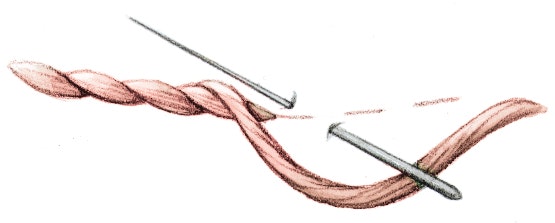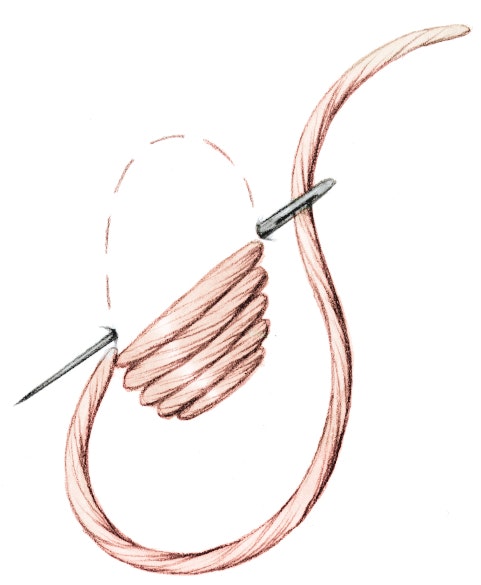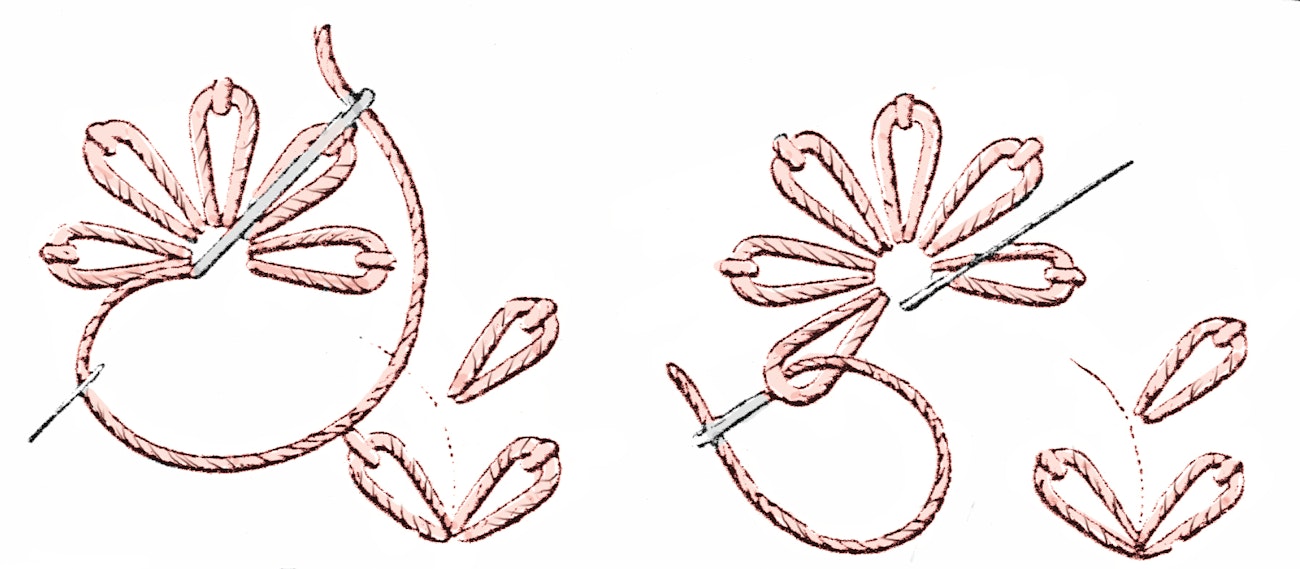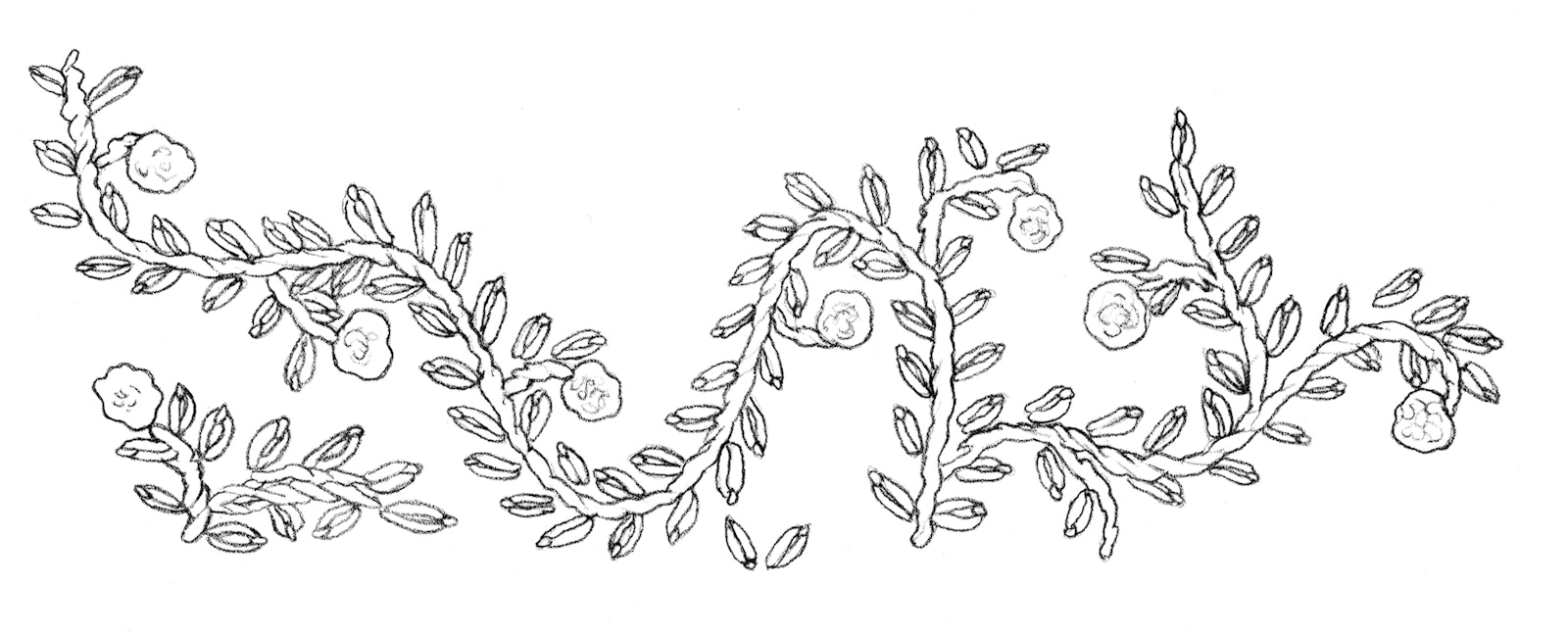Subscriber Exclusive
An Endlessly Versatile Medieval Vine to Embroider
Celebrate World Embroidery Day, July 30, with this elegant pattern.
Celebrate World Embroidery Day, July 30, with this elegant pattern. <a href="https://pieceworkmagazine.com/juliettes-medieval-vine/">Continue reading.</a>
https://pieceworkmagazine.com/cdn-cgi/image/format=auto/https://www.datocms-assets.com/75076/1721927570-pattern-res-header.jpg?auto=format&w=900
Decorate all manner of items with this graceful design from PieceWork.
Participating in World Embroidery Day reminds us of our common bond with stitchers from all cultures in the past who created magic using only a needle and thread. I love the timeless appeal of a meandering vine, and this pretty design lends itself to many variations—I think it would be stunning in rich colors and metallics on velvet, dainty in white on white stitched with fewer strands of floss, and trendy in greens with an accent color on a denim jacket. Simple stitches make this pattern beginner friendly; I urge you to try it for a World Embroidery Day project! —Pat Olski, PieceWork editor
This graceful embroidered vine is adapted from the angel that Juliette Hamelecourt designed for Cartier’s 1974 Christmas window. In a telephone conversation with Juliette, she explained that the fruit was representative rather than a realistic rendering of a specific fruit. Juliette worked the vine portion of the original with three rows of double threaded DMC metallic floss; she worked the leaves with red embroidery floss using the detached chain (also called daisy) stitch; she used a tiny chain stitch, worked in a spiral, to create the fruit.
The medieval vine motif can be worked on a collar or cuff. Portions could be placed on a pocket, the flap of a purse, or down the front placket of a dress or blouse. Find the pattern and the article in the November/December 1999 issue of PieceWork, or
current subscribers can log in and access this bonus subscriber-exclusive PDF below.
 Decorate cuffs, collar, or the flap of a bag with this graceful vine pattern. Photo by Mary Staley Pridgen
Decorate cuffs, collar, or the flap of a bag with this graceful vine pattern. Photo by Mary Staley Pridgen
Juliette’s Medieval Vine pattern
SUBSCRIBER EXCLUSIVE
Unlock the Full Article with a PieceWork Subscription
Get instant access to this article and the entire PieceWork library of projects, inspiration, and expert instruction. With your subscription, you’ll receive:
Unlock timeless techniques and heirloom-quality patterns
Learn from expert tutorials that deepen your historical craft knowledge
Enjoy unlimited access to exclusive content—updated regularly
Includes full access to PieceWork magazines + new issues.
PieceWork celebrates the rich history of needlework and makers from around the globe.
Plans start at just $4.99/month. Cancel anytime.
Participating in World Embroidery Day reminds us of our common bond with stitchers from all cultures in the past who created magic using only a needle and thread. I love the timeless appeal of a meandering vine, and this pretty design lends itself to many variations—I think it would be stunning in rich colors and metallics on velvet, dainty in white on white stitched with fewer strands of floss, and trendy in greens with an accent color on a denim jacket. Simple stitches make this pattern beginner friendly; I urge you to try it for a World Embroidery Day project! —Pat Olski, PieceWork editor
This graceful embroidered vine is adapted from the angel that Juliette Hamelecourt designed for Cartier’s 1974 Christmas window. In a telephone conversation with Juliette, she explained that the fruit was representative rather than a realistic rendering of a specific fruit. Juliette worked the vine portion of the original with three rows of double threaded DMC metallic floss; she worked the leaves with red embroidery floss using the detached chain (also called daisy) stitch; she used a tiny chain stitch, worked in a spiral, to create the fruit.
The medieval vine motif can be worked on a collar or cuff. Portions could be placed on a pocket, the flap of a purse, or down the front placket of a dress or blouse. Find the pattern and the article in the November/December 1999 issue of PieceWork, or
current subscribers can log in and access this bonus subscriber-exclusive PDF below.
 Decorate cuffs, collar, or the flap of a bag with this graceful vine pattern. Photo by Mary Staley Pridgen
Decorate cuffs, collar, or the flap of a bag with this graceful vine pattern. Photo by Mary Staley Pridgen
Juliette’s Medieval Vine pattern
[PAYWALL]
Materials
- Wichelt 32-count linen fabric, 6" x 9 1/2" (15.2 x 24.1 cm), #6540, Evergreen/Dark Teal
- Paternayan Persian yarn, 1 skein of 968, red
- DMC metallic embroidery floss, 1 skein of 5284, gold
- Embroidery hoop, oval, 5" x 9" (12.7 x 22.9 cm)
- Needle, size 18 tapestry
- White transfer paper
- Dull pencil
- Finished size: 2 1/2" x 6 1/2" (6.4 x 16.5 cm)
 Pattern for tracing, actual size.
Pattern for tracing, actual size.
Transfer pattern to fabric by placing transfer paper between fabric and design and tracing over the design with a dull pencil. Mount the fabric in embroidery hoop. Embroider, using stitches and number of plies indicated in the Stitch Guide.
Stitch Guide
Vine: Stem Stitch—3 strands gold floss
Fruits: Satin Stitch—2 strands gold floss or 2 strands red yarn
Leaves: Detached chain stitch—1 strand red yarn

Stem stitch.

Satin stitch.

Detached chain stitch.
Place finished piece, right side down, on a thick towel and gently steam from wrong side to take out wrinkles.
“Juliette’s Medieval Vine” PDF Download
Download PDF
Judy Kettner enjoys working with fibers in many different techniques. She is a former project coordinator for PieceWork magazine.
Originally published February 20, 2015; updated July 29, 2024.
 Decorate cuffs, collar, or the flap of a bag with this graceful vine pattern. Photo by Mary Staley Pridgen
Decorate cuffs, collar, or the flap of a bag with this graceful vine pattern. Photo by Mary Staley Pridgen

 Pattern for tracing, actual size.
Pattern for tracing, actual size.

